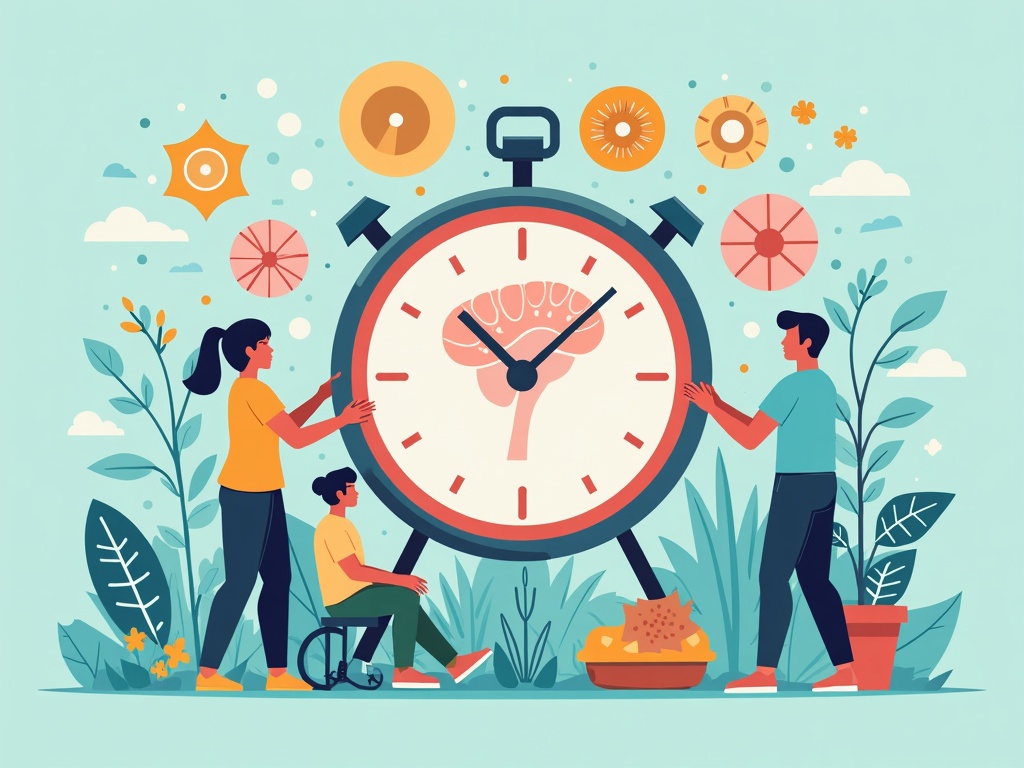Building a Weekly Recovery Plan for Arthritis
Arthritis, with its relentless joint pain and stiffness, can make everyday life a challenge. But what if you could reclaim some control, ease the discomfort, and improve your overall well-being? Building a weekly recovery plan isn't just a luxury; it's a necessity for managing arthritis effectively. Imagine a week structured not just around pain, but around active self-care, strategic rest, and gentle movement. This isn't about eliminating arthritis, but about living a fuller, richer life alongside it. Let’s explore how to create a personalized recovery plan that works for you.
Understanding Arthritis and Recovery
Before diving into the specifics of a weekly recovery plan, it's crucial to understand what arthritis is and why recovery is so important. Arthritis isn't a single disease; it's an umbrella term for over 100 different conditions that affect the joints. The two most common types are osteoarthritis (OA) and rheumatoid arthritis (RA).
- Osteoarthritis (OA): This is the wear-and-tear type of arthritis, where the cartilage that cushions the ends of bones gradually breaks down.
- Rheumatoid Arthritis (RA): This is an autoimmune disease where the body's immune system attacks the lining of the joints, causing inflammation and damage.
Regardless of the type, arthritis often leads to pain, stiffness, swelling, and decreased range of motion. This, in turn, can impact your ability to perform daily tasks, exercise, and even sleep soundly. A well-structured recovery plan addresses these challenges by focusing on:
- Pain Management: Techniques to reduce and cope with pain.
- Inflammation Control: Strategies to minimize joint inflammation.
- Joint Protection: Methods to prevent further joint damage.
- Improved Mobility: Exercises and therapies to maintain or increase range of motion.
- Mental Well-being: Practices to cope with the emotional toll of chronic pain.
Assessing Your Needs and Setting Goals
The first step in building a weekly recovery plan is to assess your individual needs and set realistic goals. What are your biggest challenges? What are you hoping to achieve? Consider these questions:
- Pain Levels: How would you rate your pain on a scale of 1 to 10, both at rest and during activity?
- Stiffness: When is your stiffness at its worst (e.g., morning, after inactivity)?
- Functional Limitations: What activities are difficult or impossible due to your arthritis?
- Emotional Impact: How does your arthritis affect your mood, stress levels, and social life?
Once you have a clear understanding of your current situation, you can set specific, measurable, achievable, relevant, and time-bound (SMART) goals. For example:
- Instead of: Reduce pain.
- Try: Reduce morning stiffness by 30 minutes within one month.
- Instead of: Improve mobility.
- Try: Be able to walk for 15 minutes without increased pain by the end of two months.
Remember to consult with your doctor or a physical therapist to get personalized recommendations and ensure your goals are realistic and safe.
Key Components of a Weekly Recovery Plan
A comprehensive weekly recovery plan for arthritis should incorporate a variety of strategies, including rest, exercise, pain management techniques, and mental well-being practices. Here’s a breakdown of essential components:
1. Strategic Rest and Activity Balance
Finding the right balance between rest and activity is crucial. Overdoing it can exacerbate pain and inflammation, while too much inactivity can lead to stiffness and muscle weakness. Plan your week with periods of both rest and activity, and listen to your body's signals. Consider these tips:
- Pace Yourself: Break down activities into smaller, more manageable chunks.
- Take Breaks: Schedule regular breaks throughout the day to rest your joints.
- Alternate Activities: Switch between tasks that use different muscle groups.
- Respect Pain Signals: Stop an activity if you experience increased pain.
2. Gentle Exercise and Movement
Exercise is essential for maintaining joint health, reducing pain, and improving overall function. However, it's important to choose the right types of exercises and to perform them correctly. Focus on low-impact activities that are gentle on your joints:
- Range-of-Motion Exercises: These exercises help maintain flexibility and reduce stiffness. Examples include gentle stretching, arm circles, and leg swings.
- Strengthening Exercises: Strengthening exercises build the muscles around your joints, providing support and stability. Use light weights or resistance bands, and focus on proper form.
- Aerobic Exercises: Aerobic exercises improve cardiovascular health and can help reduce pain and fatigue. Good options include walking, swimming, cycling, and water aerobics.
Always start with a warm-up and end with a cool-down. If you're new to exercise, start slowly and gradually increase the intensity and duration as you get stronger.
3. Pain Management Techniques
Effective pain management is a cornerstone of any arthritis recovery plan. A variety of techniques can help reduce pain and improve your quality of life:
- Heat and Cold Therapy: Heat can help relax muscles and relieve stiffness, while cold can reduce inflammation and numb pain. Experiment to see what works best for you.
- Topical Pain Relievers: Creams and gels containing ingredients like capsaicin or menthol can provide localized pain relief.
- Over-the-Counter Pain Medications: Nonsteroidal anti-inflammatory drugs (NSAIDs) like ibuprofen or naproxen can help reduce pain and inflammation. Acetaminophen (Tylenol) can also be effective for pain relief. (Always consult with your doctor before taking any new medications).
- Prescription Medications: Your doctor may prescribe stronger pain medications or disease-modifying antirheumatic drugs (DMARDs) to manage your arthritis.
- Massage Therapy: Massage can help relax muscles, improve circulation, and reduce pain.
- Acupuncture: This traditional Chinese medicine technique involves inserting thin needles into specific points on the body to relieve pain.
4. Nutrition and Hydration
What you eat can have a significant impact on your arthritis symptoms. An anti-inflammatory diet, rich in fruits, vegetables, whole grains, and healthy fats, can help reduce inflammation and pain. Staying well-hydrated is also essential for joint health.
- Foods to Emphasize: Fatty fish (salmon, tuna, mackerel), olive oil, nuts and seeds, colorful fruits and vegetables (berries, spinach, broccoli).
- Foods to Limit: Processed foods, sugary drinks, red meat, refined carbohydrates.
- Hydration: Aim for at least eight glasses of water per day.
5. Sleep Hygiene
Getting enough sleep is crucial for managing pain and promoting overall well-being. Arthritis pain can make it difficult to fall asleep or stay asleep, but good sleep hygiene can help.
- Establish a Regular Sleep Schedule: Go to bed and wake up at the same time each day, even on weekends.
- Create a Relaxing Bedtime Routine: Take a warm bath, read a book, or listen to calming music before bed.
- Optimize Your Sleep Environment: Make sure your bedroom is dark, quiet, and cool.
- Avoid Caffeine and Alcohol Before Bed: These substances can interfere with sleep.
6. Mental and Emotional Well-being
Living with arthritis can take a toll on your mental and emotional health. Chronic pain, functional limitations, and social isolation can lead to anxiety, depression, and stress. It's important to incorporate practices that promote mental and emotional well-being into your weekly recovery plan.
- Mindfulness and Meditation: These practices can help you focus on the present moment and reduce stress and anxiety.
- Yoga and Tai Chi: These mind-body practices combine gentle movement with relaxation techniques.
- Spending Time in Nature: Studies have shown that spending time in nature can reduce stress and improve mood.
- Social Connection: Connect with friends, family, or support groups to combat social isolation.
- Therapy or Counseling: If you're struggling with anxiety, depression, or other mental health issues, consider seeking professional help.
Sample Weekly Recovery Plan
Here's a sample weekly recovery plan that you can adapt to your individual needs and preferences:
| Day | Morning | Afternoon | Evening |
|---|---|---|---|
| Monday | Gentle stretching (15 minutes) | Walk (20 minutes) | Warm bath with Epsom salts |
| Tuesday | Strengthening exercises (20 minutes) | Rest and elevate joints | Mindfulness meditation (10 minutes) |
| Wednesday | Range-of-motion exercises (15 minutes) | Swimming (30 minutes) | Social activity with friends |
| Thursday | Gentle stretching (15 minutes) | Rest and apply cold pack | Yoga (30 minutes) |
| Friday | Strengthening exercises (20 minutes) | Household chores (pace yourself) | Relaxing hobbies (reading, listening to music) |
| Saturday | Range-of-motion exercises (15 minutes) | Leisurely walk in nature | Prepare a healthy meal |
| Sunday | Rest and relaxation | Gentle stretching (15 minutes) | Plan for the week ahead |
Tracking Progress and Making Adjustments
It's important to track your progress and make adjustments to your recovery plan as needed. Keep a journal to record your pain levels, stiffness, functional limitations, and mood. This will help you identify what's working and what's not. Be patient and persistent. It may take time to find the right combination of strategies that work best for you.
The Long Game: Consistency and Adaptation
Living well with arthritis isn't about finding a quick fix; it's about adopting a sustainable lifestyle that supports long-term joint health and overall well-being. Building a weekly recovery plan is a crucial step in that journey. Remember, consistency is key, but so is adaptation. Listen to your body, adjust your plan as needed, and celebrate your successes along the way. By taking proactive steps to manage your arthritis, you can reclaim control of your life and live a fuller, richer existence, one week at a time.


